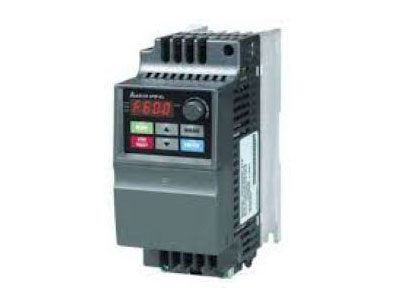Key Takeaway
A Variable Frequency Drive (VFD) converts power in three main steps. First, it takes the incoming AC power and converts it to DC using a rectifier. This rectifier uses diodes to change the AC power to DC. Second, the DC power is filtered and smoothed in a DC bus with capacitors. Finally, the DC power is converted back to AC by an inverter. This inverter uses transistors to create a variable AC output with the desired frequency and voltage, allowing precise control of motor speed and torque.
Conversion Mechanism in VFDs
The conversion mechanism in VFDs involves several critical stages. Initially, VFDs receive an AC input, which is then converted into DC through a process known as rectification. The DC power is further processed and converted back into AC with the desired frequency and voltage. This intricate conversion process allows for precise motor control, essential in various industrial applications. By adjusting the frequency and voltage, VFDs provide motors with the flexibility needed to match specific operational requirements, enhancing efficiency and performance.

Role of Rectifiers in Conversion
Rectifiers play a pivotal role in the conversion process of Variable Frequency Drives (VFDs). Their primary function is to convert incoming AC (alternating current) power into DC (direct current) power, a critical step for VFD operation. Typically, rectifiers use diodes or thyristors to perform this conversion.
Understanding rectifiers is crucial for anyone working with VFDs. High-quality rectifiers ensure minimal power loss and efficient conversion, which is vital for maintaining the VFD’s efficiency. When AC power is converted to DC power, it allows for smoother control of the motor speed, enhancing the performance and longevity of the equipment.
The quality of rectification directly impacts the overall performance of the VFD. Poor quality rectifiers can lead to significant power losses and reduced efficiency. Engineers must select rectifiers that offer reliable and efficient conversion to ensure the VFD operates optimally.
You May Like to Read
DC Bus and Inverter Functions
Once the power is rectified to DC, it flows through the DC bus. The DC bus acts as a reservoir, smoothing out the DC power and maintaining a steady voltage level. It’s crucial in ensuring stable and efficient power delivery to the inverter stage. The inverter then converts the DC power back to AC at the required frequency and voltage. This conversion is achieved using semiconductor devices like IGBTs (Insulated Gate Bipolar Transistors). These devices rapidly switch the DC power on and off, creating a pulse-width modulated (PWM) AC output.
This PWM output is highly versatile, allowing precise control of motor speed and torque. This flexibility is vital for optimizing VFD performance in various industrial applications. Understanding how the DC bus and inverter functions work together is essential for troubleshooting and maintaining VFD systems. By mastering these concepts, engineers can ensure their equipment operates at peak efficiency, minimizing downtime and enhancing productivity. The clear, reliable performance of the DC bus and inverter stages underpins the effectiveness of VFDs in industrial settings, making them indispensable tools in modern automation.
Practical Examples of Conversion Processes
Imagine you’re working in a manufacturing plant with a conveyor belt system. The Variable Frequency Drive (VFD) is at the heart of this system, controlling the motor speed to align with production demands. Here’s how it works: during peak production times, the VFD ramps up the motor speed, ensuring products move swiftly down the line. When demand drops, the VFD reduces the motor speed, conserving energy and minimizing wear and tear. This precise control leads to enhanced efficiency and prolonged equipment lifespan.
In this practical example, the VFD’s role in converting electrical power to optimal motor performance is evident. It dynamically adjusts based on real-time needs, showcasing its impact on productivity. By fine-tuning motor operations, the VFD not only boosts production efficiency but also supports sustainable practices by reducing energy consumption. This example highlights the significance of VFD conversion processes in real-world applications, making it clear how essential they are in modern industrial environments. Whether you’re in a high-demand phase or a slower period, the VFD ensures your system runs smoothly, efficiently, and cost-effectively. This practical insight demonstrates the value of integrating VFDs in manufacturing processes.
Challenges and Solutions in VFD Conversion
Despite their numerous advantages, Variable Frequency Drives (VFDs) face several challenges that must be addressed to ensure optimal performance. One prevalent issue is harmonics, which can create electrical disturbances and reduce the efficiency of the power system. To mitigate harmonics, engineers often employ filters and adhere to proper installation practices. This not only enhances the power quality but also prolongs the life of the equipment.
Another significant challenge is thermal management. VFDs can generate substantial heat during operation, which, if not managed properly, can lead to overheating and subsequent equipment failure. Implementing adequate cooling systems and conducting regular maintenance are essential to prevent such issues. Cooling systems, such as fans or liquid cooling, can effectively dissipate the heat, ensuring that the VFDs operate within safe temperature ranges.
Understanding these challenges and implementing effective solutions is crucial for maintaining the longevity and efficiency of VFDs. By addressing harmonics and thermal management, engineers can ensure that VFDs operate reliably and efficiently, maximizing their benefits in industrial applications. These measures not only improve the performance but also enhance the safety and reliability of the entire system.
Conclusion
In conclusion, VFDs are vital components in industrial automation, offering precise control over motor speed and torque. By converting AC power to DC and back to AC with the desired frequency and voltage, VFDs enable efficient and flexible motor operation. Understanding the conversion mechanism, the role of rectifiers, and the functions of the DC bus and inverter is essential for any engineer working with VFDs. Addressing challenges like harmonics and thermal management ensures the reliable and efficient performance of VFDs in various industrial applications.
